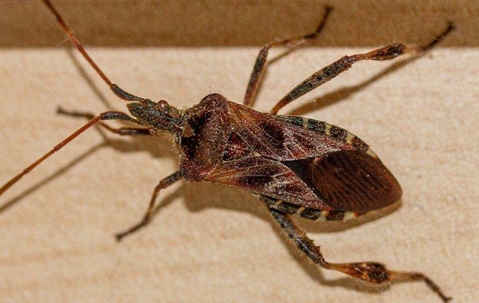These bugs have made themselves at home in Colorado. Many properties in this region have delicious trees available that these pests may take full advantage of when nibbling or seeking warm-season hangout spots. Conifers like the white spruce, hemlock, Douglas fir, and some particular types of pine trees.
What Are Western Conifer Seed Bugs?
Part of the Coreidae family, this type of insect may be referred to as a leaf-footed bug; they are sometimes mistakenly labeled as a stink bug or assassin bug. The western conifer seed bug is less than an inch long and exhibits colors ranging from a medium to reddish-brown. Yellow and orange areas may be observed on its back when flying and the wings are moving. Like a true insect, this pest has six legs and two antennae.
Preferred Habitats
These bugs have made themselves at home in Colorado. Many properties in this region have delicious trees available that these pests may take full advantage of when nibbling or seeking warm-season hangout spots. Conifers like the white spruce, hemlock, Douglas fir, and some particular types of pine trees, offer some favorite habitats and buffets.
Like many similar bugs, western conifer seed bugs release an unpleasant odor when feeling threatened. The smell may be described as a displeasing evergreen or musky scent. Find out how to best keep western conifer seed bugs out of your Edwards home to avoid ever having to get a whiff of this pest’s foul odor.
Western Conifer Seed Bugs: Potential Issues
The good news is that these insects do not bite or sting people and are not known to carry pathogens to homeowners either. These bugs do not cause structural damage to residences; they’re mainly just considered a nuisance.
The bad news is that these bugs can invade homes in large numbers, and once they’re in, they’re challenging to remove. A group of flying bugs that can stink up a house isn’t exactly a fun thought. Trees, especially evergreens, may be at risk from western conifer seed bugs as well. Any property owner needs to know that the young of these insects, known as nymphs, feed off the pinecones the trees use to produce seed, so there could be unfortunate repercussions.
Four Prevention Tips
- Thwart Entrance At The Right Time: Western conifer seed bugs don’t like to spend cold winters outdoors. Before autumn temperatures begin dipping down too low, these pests look for areas they can ride out the cold season; don’t let homes be a suitable refuge. Take preventative measures at the end of summer.
- Prevent Home Access: Do a little detective work and find any cracks and crevices where these little buggers could get inside the house. Look around baseboards, moldings, soffits, doorways, and heating registers. Don’t forget attics and basements. Fill any potential trouble areas with caulk or use weatherstripping where appropriate.
- Ensure Screens Are In Good Repair: These bugs may use tiny holes to force their way indoors, so check that window screens are free of tears or breaks.
- Use Insecticidal Soap: Buy or make this non-toxic liquid, then spray it liberally around the home to help steer western conifer seed bugs away from the home.
Solving The Problem Of Western Conifer Seed Bugs
Wondering how to best keep western conifer seed bugs out of your Edwards home? The best solution to ridding a property of this pest is the most comprehensive one. Contact our knowledgeable technicians at RAM Pest Control for total western conifer seed bug control. We offer both home pest control as well as commercial pest management solutions.
Request Your Free Inspection
Contact Us today to get your free inspection!

